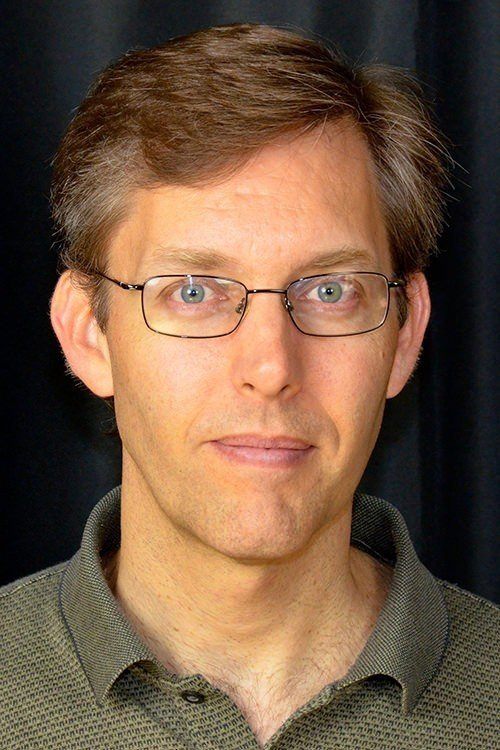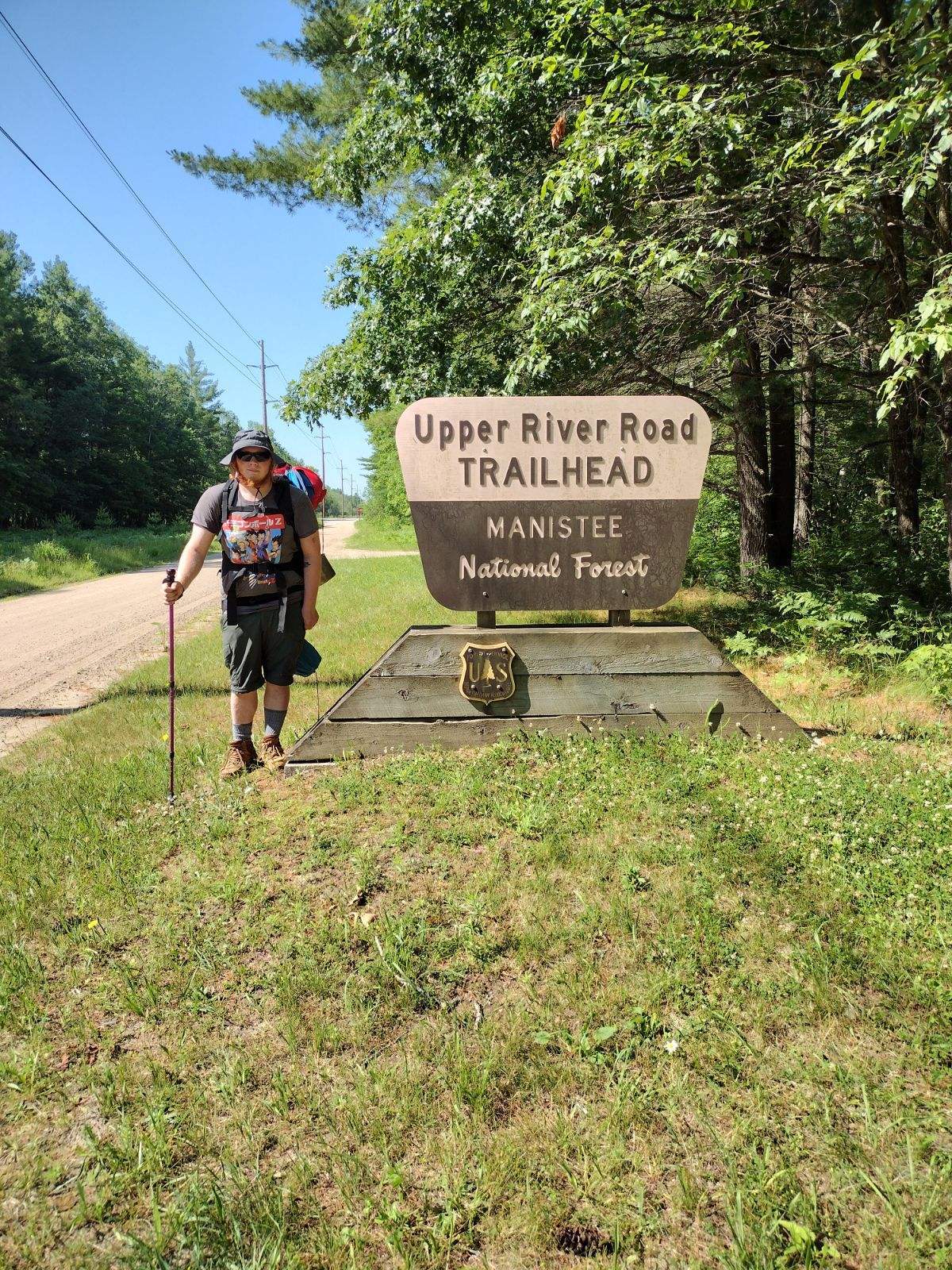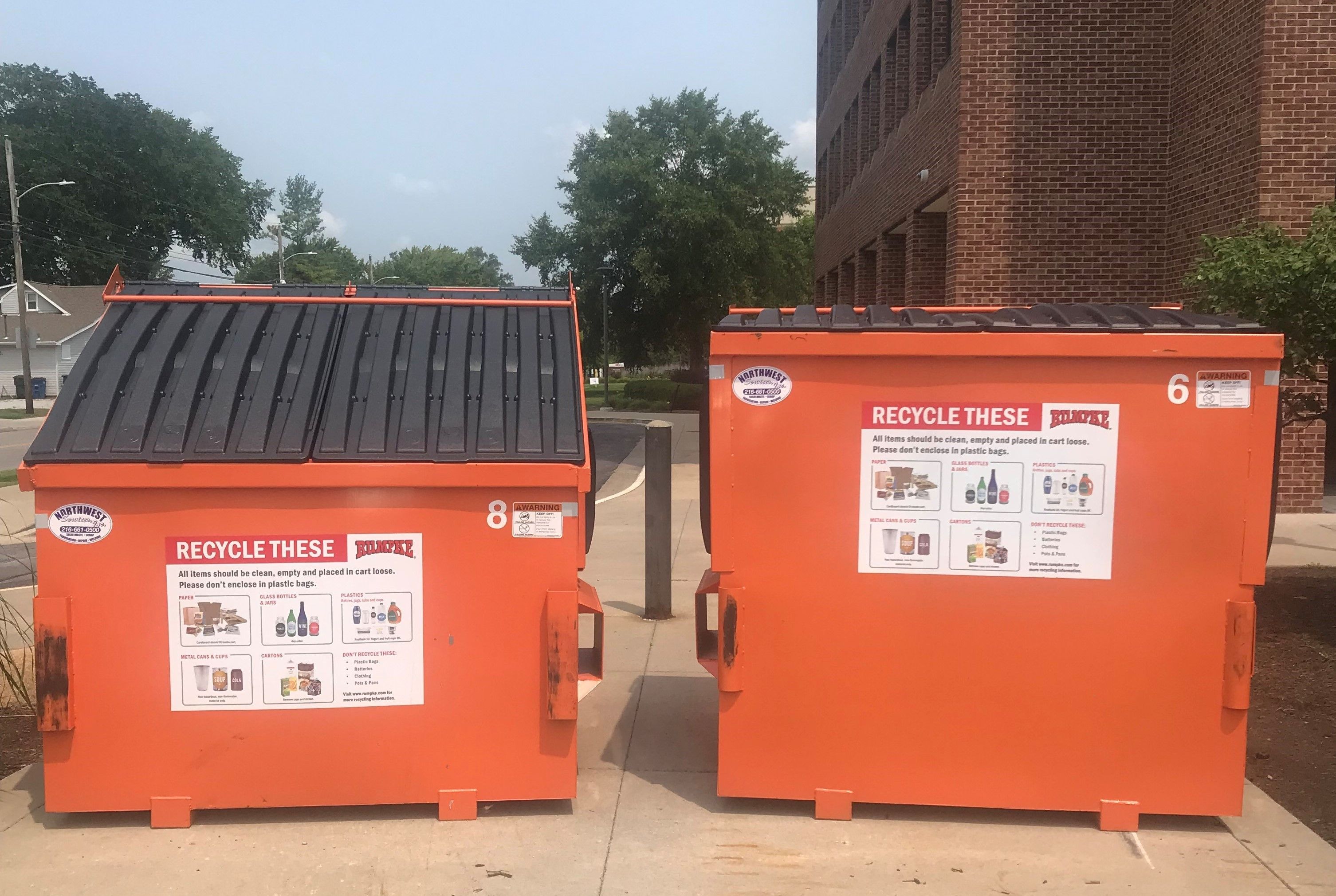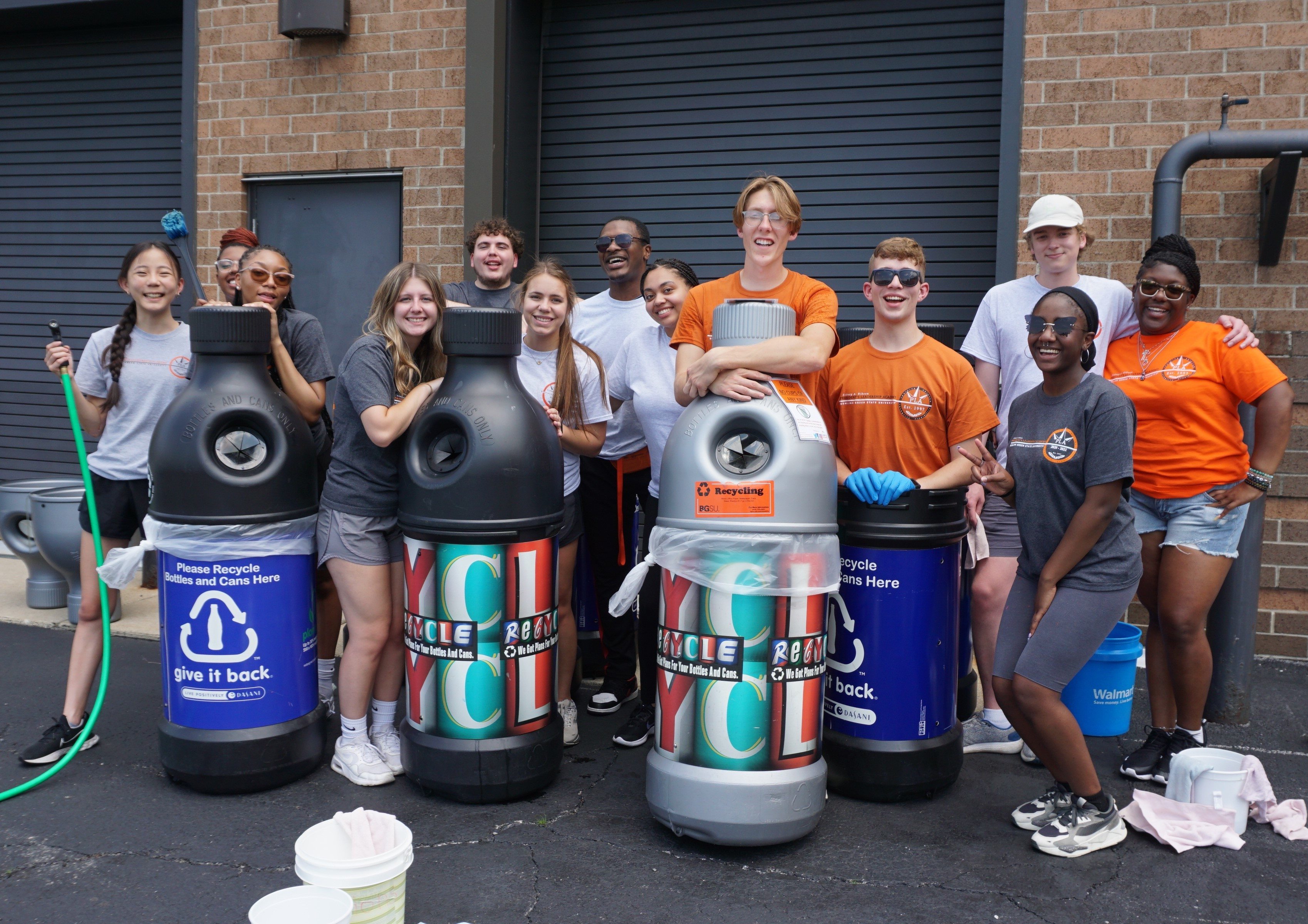Summer 2023 Newsletter

Eco-Hero Spotlight
By: Sean Cook
The Eco-Hero Spotlight is an initiative started by Campus Sustainability to actively seek out and recognize individuals or groups that make an Eco-friendly impact on BGSU. Anyone can be an Eco-Hero, so long as they are willing to do what it takes to promote sustainability.
Our Eco-Hero for this summer is BGSU’s Dr. Craig Zirbel.
Dr. Craig Zirbel has been a professor of mathematics and statistics here at BGSU since 1996. He has a research professor position, teaching two classes each semester, an undergrad class and a graduate class. He mainly teaches probability theory courses, which studies the likelihood of an event happening under certain conditions. This can cover topics from temperature fluctuation to blackjack. He started studying Applied and Computation Math at Princeton in 1993 and decided to start working at BGSU without actually living in Ohio previously.
Dr. Zirbel became interested in sustainability in the 1990s when he bought a house with a gas furnace. As most of us know, it gets pretty expensive to heat your house in the winter, so he asked himself how he could save money. Electricity and wiring interested him, so he decided to buy an energy-efficient furnace and started insulating a lot of the house himself. He even insulated the attic twice because of how important it is! According to Dr. Zirbel, switching to a heat pump and properly insulating a house can pay for itself in 7 years. The good thing about housing insulation is that it amazingly keeps paying for itself over 20 years. Over time, the initial investment not only pays itself off financially, but the environmental benefits also last because you have to burn less fossil fuels to live at a comfortable temperature in your home.
Another major lifestyle switch that Dr. Zirbel made was when he bought his first electric car, a 2015 model Tesla. He recommends electric vehicles to people because they’re fun to drive, quiet, and cheaper than gas cars over time. Also, the maintenance cost for electric vehicles is a lot lower because many of the parts that need consistent repair in a gas powered car aren’t used in electric vehicles. The battery is the biggest thing you have to worry about, but Dr. Zirbel says that problem is going away with time. The second electric vehicle he bought was a 2018 Chevy, and he has had to replace the main battery for both of his cars, but he sees this as a step in the right direction because the battery issues of electric vehicles are an engineering problem, so they will be fixed over time. He likes the idea of doing something first so he can figure out the problems and give good advice, because, “that’s what teachers do”. You’re not going to be able to fully understand a problem that you have no experience with, so as long as more people start owning electric cars, more people will start understanding what’s nice about owning an electric car and what’s frustrating. These frustrations can act as barriers preventing people from making the switch to electric cars. As long as more people take the first step towards owning electric vehicles, more of these barriers will be addressed over time. Once this happens, it will be less of a commitment for people to make the switch, which will lead to a major reduction in the overall emissions that come from daily transportation in America, which makes up around 29% of our total emissions.
Dr. Zirbel sees sustainability at BGSU as very active with lots of good ideas. He believes that composting, green roofs, adding insulation on top of campus buildings and replacing many of the lights around campus with LEDs are all great examples of the ways we are sustainable. Another example of BGSU’s sustainability efforts is actually a project that Dr. Zirbel is working on. It’s a new proposal for adding several electric car charging stations to parking lots around BGSU in order to make owning an electric vehicle on campus less expensive and more convenient. The hope is to have more people make the switch to electric vehicles on campus. This is a good example of how long-term thinking is an option that is available to BGSU and many other universities because EVs aren’t going anywhere in the coming years. Making decisions like replacing lights with LEDs or insulating buildings on campus are great ways to reduce fossil fuel use and save money on energy in the long run for BGSU. Dr. Zirbel says that universities have a long timeline, so the university can afford to look towards the decisions that will provide more long term benefits. It doesn’t always have to be a question of whether or not a sustainable decision is the absolute best for the environment, as long as we’re thinking about how we can save money and reduce our fossil fuel emissions in the long run. Whether it’s a new car, insulating your house, or replacing gas appliances with electric ones, you can find a way to reduce your emissions as long as you are willing to put in a little bit of effort. In order for us to reach our university goals of becoming carbon neutral by 2040, we should try to apply this mindset across our campus. As outlined in our climate action plan, emissions caused by commuting would be classified as scope 3, or indirect, emissions. Reducing these emissions will take some effort, but it doesn’t mean we have to give up our current lifestyle. Dr. Zirbel exhibits this by acting as an educator for ways to reduce the sources of emissions in your daily life while saving money in the long run, and inspires people to act in a similar way.
Some advice that Dr. Zirbel has for current and future generations of students at BGSU is that you can reduce fossil fuel use, “it’s not all solar panels”. The first step is to replace fossil fuels with electricity to increase the demand for electricity. Putting your effort towards having more electric appliances, vehicles, induction stoves, whatever it is, as long as it gets you on the map for moving toward electrification. When there is more demand from people to move toward electric appliances, businesses will feel more comfortable catering those needs and investing in a more sustainable future. Once there is a market for electric appliances, we can start to shift our energy production to clean energy. There are enough humans on the planet that we have a significant impact on the environment, whether we mean to or not. We use enough resources that we now have to manage those resources properly in order to keep the environment healthy. He thinks the biological world has so many mind-blowingly cool organisms, life cycles, and behaviors and that it is a “crying shame” to lose them because we are mismanaging the environment.
Thank you Dr. Zirbel for doing your part to reduce your carbon footprint and sharing that information with others.
Where Are They Now?!
By: Sean Cook
Over the years, many interns have walked in and out of The Office of Campus Sustainability doors. These interns have made major contributions and impacts that have marked successful milestones for the Office of Campus Sustainability. We wanted to know what these interns have been up to and how the work they did as an intern has impacted their lives. Therefore, we started the newsletter series- “Where Are They Now?!”

This July, the Office of Campus Sustainability reconnected with former intern, Jacob Kern.
Jacob graduated from Bowling Green State University in 2021 with a Bachelor’s degree in Environmental Science with a specialization in Sustainable Management.
Jacob Kern | Sustainability Intern (2019-2020)
Jacob started working with Campus Sustainability in 2019 and is now working in the Environmental Health Department for the Kalamazoo county government in Michigan. Most of the work he is doing currently is focused on capturing mosquitos and ticks to check them for diseases like the West Nile virus, Arbovirus, or Eastern Equine Encephalitis.
When working at the Office of Campus Sustainability, Jacob had a variety of responsibilities. He made social media posts, edits to our website, communicated with offices around campus to get them Green Office certified, and worked in the Re Store, among other things. Campus sustainability week and Earth Month were two opportunities to get involved with supporting numerous sustainability programs. One of the successful and well-attended projects that he supervised during Earth Month was the building and installation of bird houses made from recycled pallet wood.
Jacob dealt with the added challenge of working until the effects of the pandemic arrived at BGSU. He had to abruptly leave when BSGU locked down due to the pandemic, but he was able to stay partially connected to Campus Sustainability because his fiancée worked as the Re Store student coordinator.
One of things Jacob enjoyed about working for Campus Sustainability was working with Dr. Nick and talking about his experiences. He also liked the independence of the job and how it relates to sustainable management. Jacob discovered that the interdisciplinary aspect of working at Campus Sustainability was valuable practice for his new job because of the variation of his current responsibilities. Communicating with different offices was also useful experience for Jacob because he has to be able to explain the importance of the environment to people with different backgrounds at his current job.
Jacob still remembers some of the more interesting items he found working at the Restore, including a car subwoofer that was donated during WYMO! One of the funny memories looking back at his experience was when he took a turn too fast and almost knocked Dr. Nick out of the golf cart.
Some of the advice Jacob has for students in the environmental field is to keep your mind open when looking for a job. During his time at college, Jacob was very set on a job in sustainable management, but most of the jobs he was looking for either required a lot of experience or didn’t seem like a good fit for him. He found a job that dealt with water quality, and he decided to take it even though he was looking for a job that focused more on sustainable management. Jacob says that as long as you keep looking for a job with an open mind, you will find something that works for you. Another piece of advice that Jacob has is networking with the people at your job or your professors. Being able to reach out and ask questions to people in the environmental field at BGSU was very helpful to Jacob while he was looking for a job. “Always be open to asking the professors in your field for some advice when you’re looking for a job.”
Do you have any special memories of Campus Sustainability interns? Let us know at Greenbg@bgsu.edu.

BGSU Refines Recycling with Rumpke's Reinforcement
By: Sean Cook
Did you know the items you recycle at home might be different at BGSU? Are you familiar with recycling at BGSU? Have you seen the recycling signage across campus?
BGSU’s general recycling containers have long accepted plastic bottles, aluminum/steel cans, glass bottles, office paper, newspaper, and cardboard. If you’re walking around campus you have hopefully noticed the signage on recycling bins for this accepted recycling. Those signs are more important than you might realize because they play a very significant role in preventing recycling contamination. Recycling contamination refers to any material that the recycling provider cannot process into useable material. If the recycling provider doesn’t have the equipment to process a specific material, it is considered contamination even if it can be recycled at a different facility. One of the biggest recycling struggles for BGSU and many other college campuses is how to prevent contamination before large batches of recycling are sent to the landfill to protect the recycling equipment and quality of recycled materials. For any campus like BGSU aspiring to divert as much waste from the landfill as possible, this is a big problem.
Knowing the accepted recyclables is the most important way to do your part to prevent contamination when recycling. Over the summer BGSU switched recycling providers over to Rumpke Inc. as of July. While we continue to accept the same materials from before the switch, there are some additional items that are now accepted. From here on out, paper cups, most plastic cups, clean pizza boxes, and plastic food tubs are now recyclable and can be put in any of the general building recycling containers. All accepted recyclables continue to go in the same container as before. Large orange recycling dumpsters outside of buildings were previously for cardboard only. However, now they are for all accepted recyclable materials. The best thing we can do is to be aware of the list of accepted recyclable materials, which can be found on Rumpke’s website, is featured on all exterior orange dumpsters, and will be posted on the campus sustainability website when the semester starts. Keeping the recycling free of food debris and correctly sorted will help BGSU reduce our overall waste and work towards our Climate Action Plan goals.
All empty paper cups and most plastic beverage cups are now accepted recyclables. The biggest thing to remember when recycling beverage cups is to remove any liquids, lids, and straws, because these are still not accepted by Rumpke. The reason for this is because the plastic is too thin and flexible to go through the recycling machinery and they are too small to be automatically sorted by machinery. One other thing to be aware of when recycling on campus is that Styrofoam and colorful Solo brand cups are not accepted. These cups are made from a plastic called polystyrene, which is very difficult and expensive for companies to recycle. To put things into perspective, it normally costs around $100 per ton for the recycling process, but recycling polystyrene costs around $3,000 per ton. This means it is very difficult to find a company that will recycle these type of cups at an affordable price, so most Styrofoam products will end up going into the landfill.
Pizza boxes have also been added to the list of accepted recyclables, as long as they are clean of food residue and dry. One of the easiest ways to make sure that a pizza box is clean enough to recycle is by having a paper liner at the bottom of the box. As long as the grease doesn’t soak through the liner, the pizza box will be clean and dry enough to recycle most of the time. The next time you order a pizza, check to see if there’s a liner at the bottom, which will make the box easier to recycle. If your pizza comes without a paper liner at the bottom, and you’re unsure whether or not the box is too greasy, it is best to stay on the safe side to throw away the box to avoid contamination of the entire dumpster.
Plastic food tubs are also now recyclable on campus. This includes containers that are used for yogurt, butter, sour cream, and fruit cups. The biggest thing to be aware of when recycling any food related product is contamination and leftover food residue. If there is food residue still at the bottom of one of these tubs, it needs to be rinsed out before put in any bin. If there’s too much food debris in a recycling dumpster, that batch of recycling might not be accepted and it could be sent to the landfill instead. Since the recycling isn’t being separated, that food residue can spill onto any paper or cardboard in the same container and it would need to be thrown away.
Avoiding contamination from food and unacceptable materials for recycling on the individual level is one of the necessary steps in order for us to meet our waste reduction goals as part of our Climate Action Plan. By 2040, BGSU plans to produce net zero greenhouse gas emissions. Consistently recycling properly is one of the ways we can help the university divert carbon dioxide from entering the atmosphere.
Sustainable Summer Services for Students
By: Zach Nemec
The end of spring classes and students on campus was no challenge for the Office of Sustainability’s summer sustainability plans. The office hosted many summer service projects for students and organizations, which continued to promote and spread sustainable awareness for BGSU’s goals of their climate action plan!

For many students, the end of the spring semester means no more classes, no more exams, no more professors, and possibly, no more being on campus at BGSU. But what you might not know is that campus during the summer was still packed with service projects and volunteer events! The Office of Sustainability offers fun, sustainable service events that contribute towards the office’s three goals of waste reduction and resource conservation, emission reduction, and education and outreach, such as Friday Night Lights, Falcon Green Game Day, Campus Race to Zero Waste, and more during the academic year. But, we keep rolling along to continue sustainability university-wide during the summer months.
This summer started off hot with a zero-waste event for the Division of Finance and Administration staff during their “Backyard Barbeque” event. This event featured delicious food, drinks, entertainment, and most importantly, COMPOSTING! Everything at this event was compostable, recyclable, or reusable! Food, drinks, plates, napkins, utensils, and cups, hence the name, zero-waste! Nothing needed to be sorted as all the plastic used was greenware, ready to be tossed alongside the food and beverage liquids. As well, clear-stream recycling bins were added for any plastic water bottles or aluminum soda cans. If this event were to occur without the use of any greenware, all plastic plates, plastic cups, and plastic utensils, for each staff and faculty member that attended, would have ended up in the landfill.
The Office of Sustainability collaborated with the Falcon Food Pantry all summer long, in their partnership with the When You Move Out, Don’t Throw It Out program. WYMO donations are sorted and displayed at the ReStore, ready for a new student to find each item and give them a new home. This all greatly helps increase landfill diversion rates, as without this program, all these items unwanted by students might be thrown out, without the chance to be used again. The Office of Sustainability donated all the food that was donated to the Falcon Food Pantry, and in turn, the Falcon Food Pantry team, along with help from the Toledo Zoo Teen Volunteers, were able to sort, organize, and display every donated item to be prepared for the start of school event. This was a win-win, as students, whether needing food from the food pantry, or other goods from the ReStore, are now able to benefit when the academic semester begins.
There was more to the ReStore! Two other summer groups, Upward Bound, and the Ability Center of Greater Toledo, volunteered here too. Both groups helped sort and organize clothing and bedding items, wiped down appliances, and cleaned furniture. As well as helping, they learned about the importance the ReStore brings to students on campus, and the impact of sustainability at BGSU. Many students are unable to acquire certain items that may be needed throughout the school year, so, the ReStore helps give them the items they need.
In another project in July, the incoming college students of the President’s Leadership Academy were split into two groups, one aiding in the cleanup and gardening of the Ohio Native Prairie at Shatzel Hall, and the other washing and scrubbing the recycling containers at the Perry Field House. The Native Ohio Prairie is in a heavily viewed location, situated next to the Bowen-Thompson Student Union and Shatzel Hall. The weeding and pulling of invasive plant species were essential in allowing the native species to thrive without competition, the entire goal of this area. The Perry Field House, on the other hand, hosts numerous events throughout the summer and academic year, and so, recycling bins that are shaped like plastic bottles are used to help mitigate landfill waste and to encourage more recycling. PLA learned more about sustainability on campus and how BGSU is tackling their goals of the climate action plan. This hopefully sparked some curiosity into the minds of these new students, as with this new knowledge of sustainability, they will hopefully join in volunteering more throughout the school year or even join an environmental organization. Both jobs were essential in preparation for the upcoming academic year!
More and more projects occurred in August. The Office of Sustainability’s team presented at the Kids Camp at the Student Recreation Center, instructing kids aged five to twelve about sustainability, more specifically, waste reduction. We taught this through “Trivia Baseball” and the “Recycling Bin Race.” This introduction to these inquisitive kids about sustainability will hopefully have a lasting effect on them as they are able to apply what they have learned at home. These games made it easy for the kids to get a firsthand experience on how to practice sustainability!
As we move closer to the fall semester, we will transition into even more service activities. These events will all be listed on the BGSUServes platform, available to any BGSU student.
Sustainability Questions & Suggestions
Do you have any questions, comments, concerns, or suggestions related to sustainability? If so, feel free to contact us at greenbg@bgsu.edu. Alternatively, you can reach us on Facebook, Twitter, or Instagram @GreenBGSU.
We look forward to hearing from you!
Like staying up to date on all of BGSU's sustainability updates? Be sure to subscribe to our newsletter to get it sent to your email inbox each month!
Updated: 01/19/2024 01:02PM
